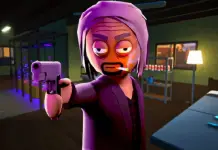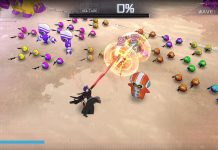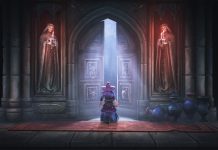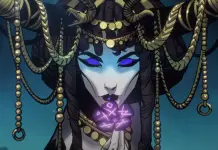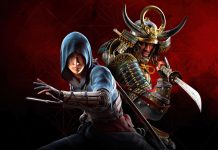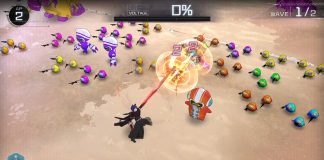Final Fantasy XIV Online’s latest patch (7.20) is out today, so I figured this is a good a time to repost this review from July last year.
For those not in the know: Live service games like Final Fantasy XIV Online tend to update every few months with new content. This keeps players coming back. It lands in the form of a patch – a downloaded update to the game.
This is what makes them ‘forever games’. They just keep going. It’s been running like this for almost 15 years now since the game was rebooted in 2010. As it stands, the team behind Final Fantasy XIV Online expect to pump out another three main games with no talk of sunsetting the title.
Nothing is certain but surely it would need to move to a new platform eventually? The main reason for doing so: The foundations behind the game would be over 20 years old by then, and technology – and gaming mechanics – have come a long way since 2010.
For me this piece has a bit of a special place. It was the first review I wrote that led me down the path of doing more thought out pieces for each game I played. It also helped me to stick to my general philosophy of beating each game I play before rendering a verdict. It’s a tough ask, as some games can be a real slog.
This review also made me wonder: How to I actually assess a living game like Final Fantasy XIV Online? It’s changing every few weeks. The best I could do is play it and focus on things that I know will stay the same like the story and scripted scenes.
I still continue to play and enjoy Dawntrail – often between other major game releases. In some ways, the patches between every main game end up telling a better story as they are fairly contained. That forces them to make each scene count. As I wrote last year, I think space to tell a larger story led to a lot of bloat and weakened the overall product.
A few weeks after Dawntrail launched it released the raiding tier which had – in my view — some of the game’s best raids to date. Another new raid tier launches later in April. I’m still deciding whether I can invest the time and willpower needed to take it on.
Initial review below:
Dawntrail

A lot of work has gone into capturing the look and feel of South America in this game.
I’m really torn over Dawntrail. I wanted to finish the main story before writing about it. And I continue to enjoy my time with the game it’s difficult to fully endorse.
Let’s get the good bits out of the way first. The combat, world, and dungeon design for this expansion are all excellent. As is its soundtrack. There’s a lot to like here, and the latest game carries forward the standard set by earlier titles. If there are awards to be won, these elements are all deserving of them.
The new Oceania Server has also avoided the issues seen with the last expansion (Endwalker’s launch). Two years ago, I had to wait three hours to log in to Final Fantasy XIV due to the queue. With this release, it’s now five minutes at worst. And the server is populated enough to make the game feel alive.
Where the game somewhat falls over, sadly, is in what has historically been its greatest strength: storytelling.
Dull writing
Dawntrail is a two-act affair. I won’t spoil it here, but the second act is significantly stronger than the first. There may be a larger narrative plan at play here with the seemingly innocuous interactions you experience in the first 20 hours of the expansion a set up for later plot points in future parts of the story. But I couldn’t help but feel like the game was wasting my time.
Part of this criticism centres around the ‘protagonist’ of the game, Wuk Lamat. She’s in competition with her siblings for the throne and is pit against them in a contest for it. It’s not as Game of Thrones as it sounds. In fact, it could have been, but due to flat writing and a desire from the designers to make Wuk Lamat likeable in every conceivable way – including purposefully endearing character flaws – it falls short.
The concept of a race for the throne is interesting in isolation and a tried and true narrative device. But in this instance, it’s somewhat dull and predictable. This is a game that has previously dealt with concepts such as broader plots around the nature of existence, the duality of war, and whether gods have the right to decide the fate of their creations. Yeah, it gets pretty heavy.

A good idea of what the actual user interface on Final Fantasy XVI looks like. However, it’s fully customisable and can change based on your job.
The stakes were always going to be lower. The writers essentially had to restart the plot for this game after your character essentially saved the universe – yes, you read that right – at the end of the last expansion. That’s not an easy ask in any sense. But I think they overcooked the pacing and left the first half of the story feeling like a chore rather than building any genuine intrigue.
Story vs design
Final Fantasy XIV writers are at their best when they are essentially playing out a plot of a Black Mirror episode, or really teasing out the morality woven into fantasy setups. And when they are on fire, they are on fire. We do get there with this expansion, but only for the last 15 hours.
This is a rare instance where you can feel the push and pull of narrative against game design here. It’s something that’s unique to video games. The writers only have around 10 hours of meaningful plot to tell, but by MMO standards, the game’s main quest must go for at least 30 hours. No other medium tolerates this like gaming, and that leads to a lot of mundane interactions for the player.
It feels like more content needs to be left on the cutting room floor. Though, I shudder to think how much is already there. Instead of 100 quests, make 40 or 50 that are more memorable, fully voice-acted, and add meaningful points to the plot. Place more emphasis on post-main-quest content – many in the hardened player base rush through the campaign anyway to prepare for raiding.
If any game development team is brave enough to do this, it’s Creative Business Unit III, who make Final Fantasy XIV. This game is disruption incarnate. When the original game flopped on release, the developers famously reworked it and relaunched it to mass critical acclaim. It’s one of a handful of titles to do so successfully. They then doubled down and launched several expansions that again pushed the bar for what an MMORPG can be.
Now it’s hit a rhythm which is likely comfortable for its design team. All expansions have six areas, 100 main quests, a few hours of voice-acted cutscenes, seven dungeons. Rinse, repeat.
But if we’re due for another three expansions (in essence, six more years of Final Fantasy XIV) before the game is expected to wrap up, I think it’s time for this title to revisit its roots. Throw the rulebook out, surprise the player base. We’re hungry for it.
Reviewed on: Playstation 5
Worth playing if you like: The Final Fantasy series, Diablo, World of Warcraft
Available on: PlayStation 5, PlayStation 4, Xbox Series X, Xbox Series S, Windows, Mac, and Steam.
- Harrison Polites writes the Infinite Lives newsletter. Follow him here.
- This is a republished review with some additional context – and pictures! I’m returning from my break in April.
Sign up for his newsletter below:
NOW READ: We asked kids about playing Roblox and one said it’s ‘literally just child gambling’










